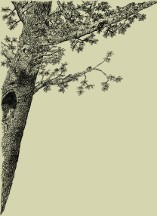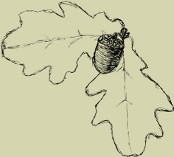42 41 40 39 38 37 36 35 34 33 32 31 30 29 28 27 26 25 24 23 22 21 20 19 18 17 16 15 14 13 12 11 10 9 8 7 6 5 4 3 2 1
Issue 27 (1996)
Up to now at working accuracy of component elements, it is a dimension, a form and a geometric structure of surface were treated together.
The aim of this paper was a determination of the maximal participation of a gauge of inequality of profile at the sphere of seat — tenon joint tolerance. The aim was realized by determination of execution tolerance and load capacity curves for seat — tenon type joint occurred at industrial conditions.
The maximal gauge of inequality of profile H in the sphere of execution tolerance Tr of seat, the load capacity curves of profile formed by the dependence:
— for seat R = 0.0229 L3 − 1.147 L2 + 23.75 L + 0 (µm)
— for tenon R = −0.0332 L3 − 1.59 L2 + 27.22 L + 331 (µm) when 32 ≥ L ≥ 0 mm.
Taking into account the participation of gauge of inequality of profile, maximal clearances increase and minimal clearances (interferences) increase. At graphic images of widening fits by the participation of the gauge of inequality of profile, it occurs surfaces that possibility a taking of test of explanation this joint phenomena like for example: dimension comprimations that occur by humidity changes during assembly and using etc.
Key words: seat, tenon, tolerance, surface roughness
Variation of wood moisture content and density in the freshly-felled birch stem (25 years old) were investigated. Between green wood moisture content and basic density of birch wood a high negative correlation was obtained. Relationship between green wood moisture content and density is in good approximation with power curve equation (y = a x−b). Green wood moisture content decreases by 40% MC when wood density increases by 100 kg/m3.
Key words: Betula pendula Roth., freshly-felled stems, humidity, density
In spite of common applying in machine tool construction ball bearings, there are still on used and investigated plain bearings particularly in all these solutions, where is possible take advantage of their quality. Willingly they are used in working mechanic friction centres, creating a kinematic pair repeatedly very vast materials. Conducted investigations aim at modification and followly association such two materials, which — from angle of working centre tribology, assure the lowest values of friction coefficient.
Performed investigations were executed with samples of alder wood and its two composites making a kinematic pair with counter-sample of steel and cast iron.
Key words: tribology, composite, treatment, friction, friction coefficient, counter-sample
Modification of phenol-formaldehyde resin with alkaline spruce (Picea excelsa L.) foliage extract was carried out. By means of infrared spectroscopy (FT-IR) structure of hardened polymers was determined. Infrared spectrum of hardened resins with various quantities of foliage extract and with or without filler (tannin) correlated with strength results of glue line. It was stated that it is possible to obtain phenol-formaldehyde resin replacing up to 20% of phenol by alkaline spruce foliage extract.
Key words: resin synthesis, phenol-formaldehyde resin, foliage extract, FT-IR spectroscopy, joint strength
There was undertaken attempt to analyse relations between percentage of sapwood and heartwood in the wood volume of the stem and some biometric features of trees. Analysed was interdependence of both types of wood with breast diameter of trees, length of crown, area of crown projection, and number of living whorls of branches at pines grown in conditions of dry forest type.
Key words: Scots pine, biometric parameters, share of sapwood and heartwood, breast diameter
Attempt was undertaken to characterise macrostructure of wood of Scots pine (Pinus sylvestris L.), which was grown in extreme ecological conditions, that is in habitat conditions of dry forest. This macrostructure has been expressed by the average width of annual increment width of late wood, share of sapwood and heartwood in the volume of stems of the trees.
Key words: dry forest, macrostructure of wood, year increment in thickness, share of late wood
Research was done on the possibility of receiving saponified rosin glue with the purpose of paper-pulp sizing in the near-inert medium. Tall oil rosin was modified with ethylene oxide and maleic acid anhydride, and then saponified with sodium hydroxide solution.
Key words: tall oil rosin, rosin modification, saponified papermakers' glues, sizing in inert medium
Maple wood impregnated primarily by water solutions of sulphuric acid with concentrations from 0% to 2.5% was thermally treated at temperatures of 160 or 190°C within the time frame of 3 hours. Subsequently it was exposed to a biodegradation by the brown-rot fungus Serpula lacrymans for the duration of 1 month. The rotting of wood was slowed down only in those situations when the thermal pretreatments of wood were combined with its pretreatment of a relatively higher concentrations of the acid.
Key words: thermolytic reactions, themally pretreated wood, chemically pretreated wood, sulphuric acid, charring, toxic substances, maple wood, brown-rot fungus Serpula lacrymans
The paper would like to contribute to the improvement of the fire-technical properties of flax board panels which are stiff produced in a considerable amount. For treatment of flax board panel solid retardant ammonium dihydrogen phosphate is recommended. Tests of combustion testify and show high quality of retardant treatment. Addition of 30% of ammonium dihydrogen phosphate seems to be satisfactory for quality of the retardant treatment of the flax board panel.
Key words: wood and non-wood composites, flax shives, flax board panels, fire retardant treatment, fireproofing
Common birch wood (Betula pendula Roth.) was subjected to laboratory tests for its resistance to the action of brown, white, soft rot fungi as well as fungi causing mould growth. Mass decrements were determined after 4, 8, 12 and 16 weeks of action of seven fungi species.
Key words: birch wood, durability, wood decay, fungi, brown rot, white rot, soft rot, mould
Investigation on the fungitoxic value of three quaternary ammonium compounds (lauryldimethylbenzylammonium chloride, lauryldimethylbenzylammonium bromide, alkylbenzylimethylammonium chloride) with borates in relation to surface moulds and soft-rot fungi were carried out. The agar-plate (screening) and wood plate methods for moulds and vermivulite-blocks method for soft-rot were applied. A wide fungitoxic activity range of the all three formulation has been proved.
Key words: quaternary ammonium compounds, fungitoxic value, wood moulding, agar method, agar-plate method, vermiculite-blocks method
Problem of mutual links between the technical uses of wood and the ecology are broadly enlightened and thoroughly discussed. The resulting opinion stated that the technical characteristics of timber perfectly meet vital requirements of the modern structural engineering. On the other hand, wood is an ecologically friendly material, self renewable in the forest, quite easily available and well competing with many other materials. For all these reasons it is not only traditionally favoured but also presently most esteemed as structural material.
Key words: renewable raw material, demographic pressure, ecological effect, new technologies















 Download PDF
Download PDF